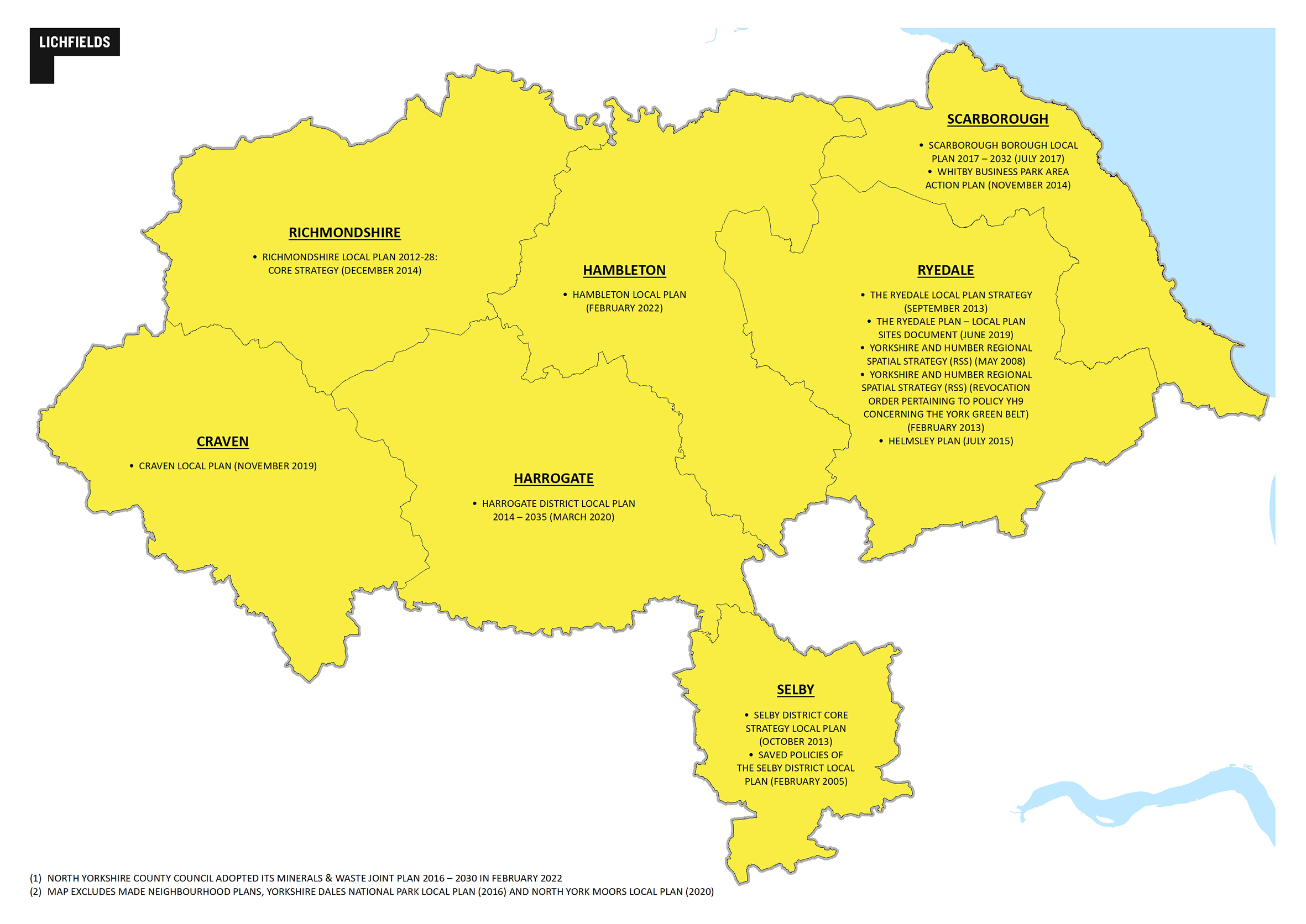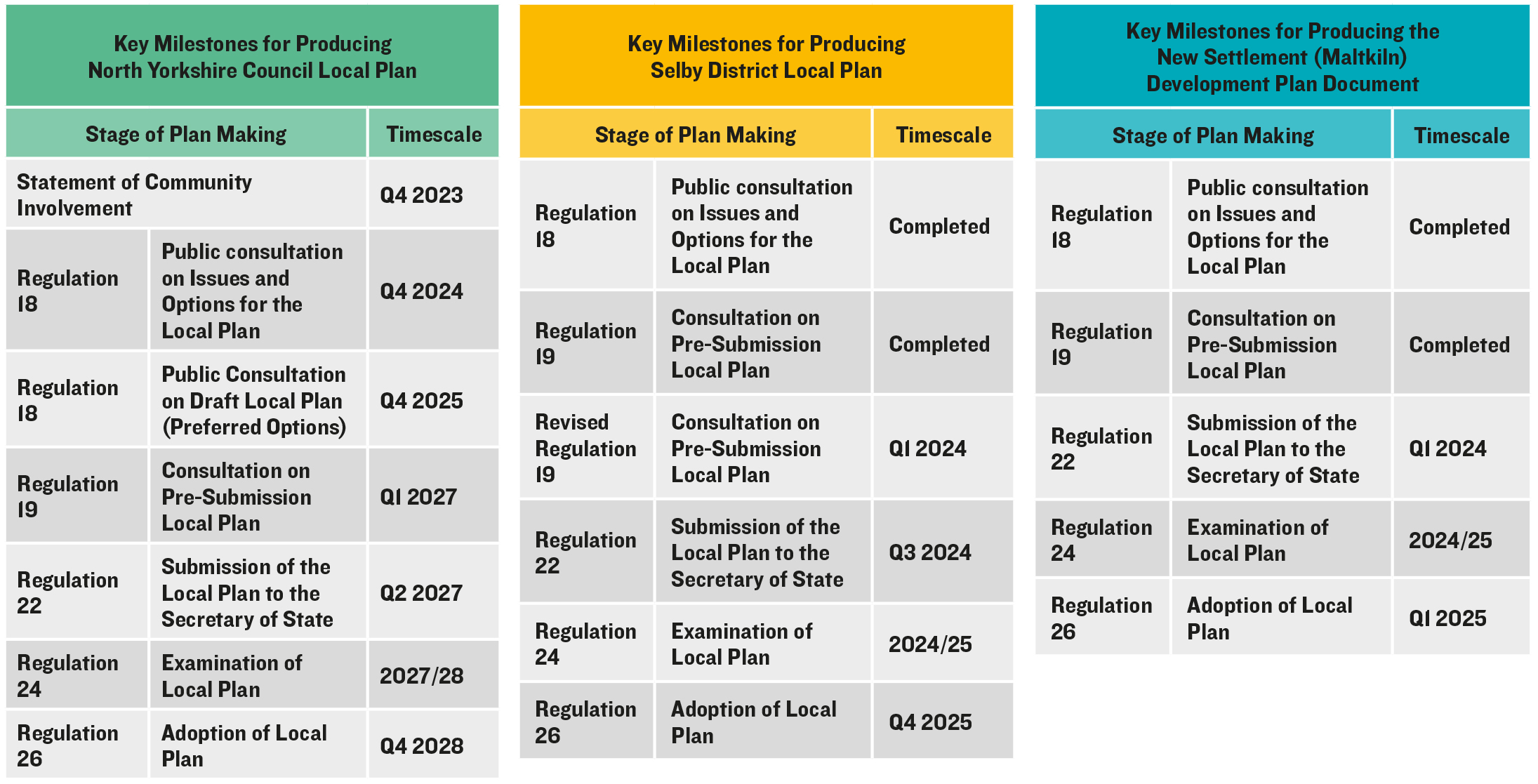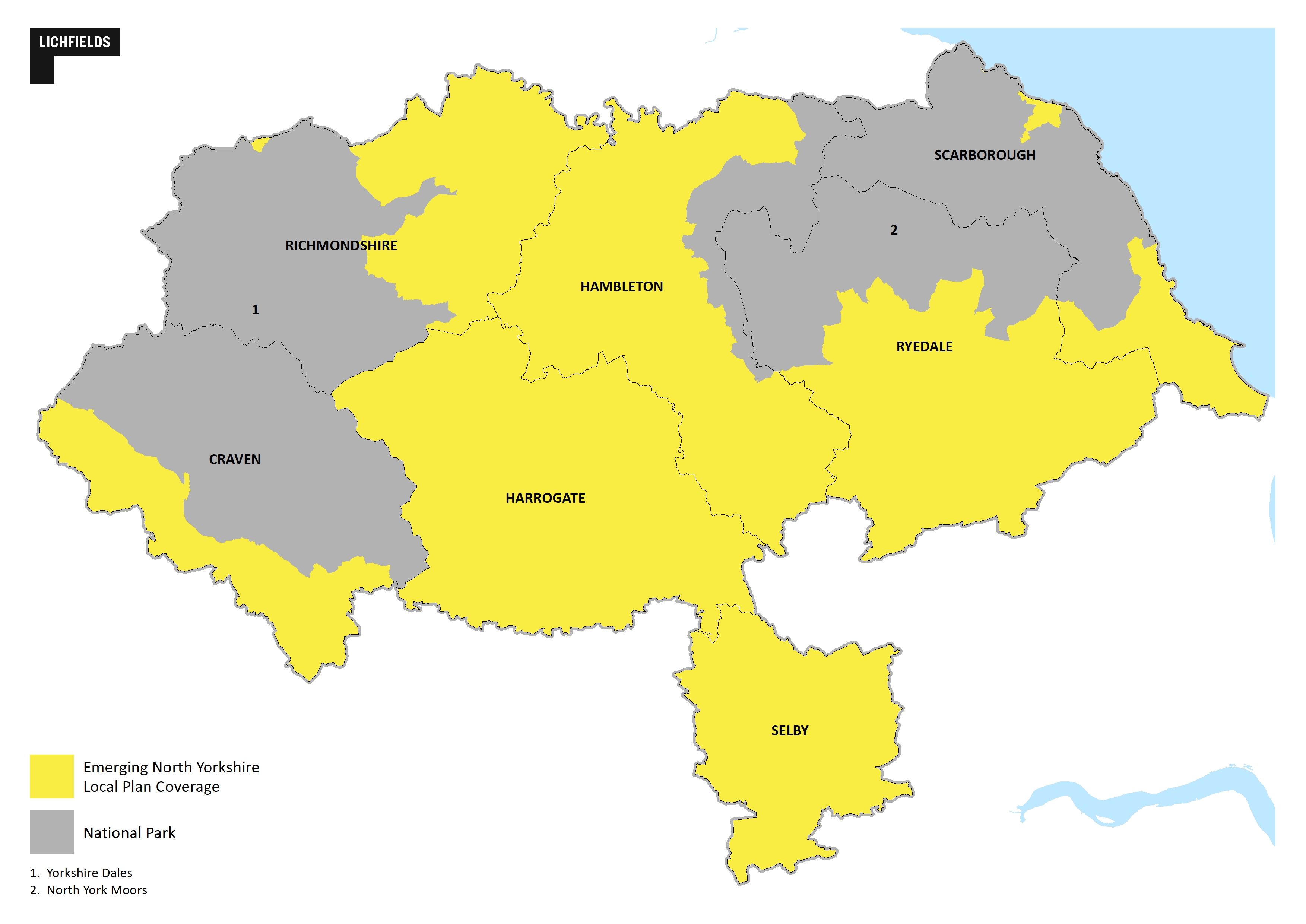Now 11 months old, North Yorkshire Council is at the early stages of preparing what could be one of the largest Local Plans in England (at least in geographic terms).
Just over a year since posting our
initial thoughts on the formation of North Yorkshire Council, work to create the new North Yorkshire Local Plan is progressing and the Council is expecting to commence its ‘call for sites’ process this month. A number of other plan-making updates have been announced recently, including on the draft Maltkiln New Settlement DPD and revised draft Selby District Local Plan which are continuing to progress given their advanced stage of preparation.
With this in mind, this blog checks in on the new Council’s plan-making preparations and highlights the key matters to be aware of for everyone who will be (or already is) involved with the process across North Yorkshire.
Key plan-making milestones identified
North Yorkshire Council’s first Local Development Scheme (LDS) has come into effect and can be viewed
here. The LDS represents the first official publication that sets out the key milestones for producing the North Yorkshire Local Plan.
The LDS also provides a helpful overview of the current Development Plans for each district that forms North Yorkshire Council. With the exception of Selby District’s adopted plans, which are intended to be superseded by the emerging Selby District Local Plan, all adopted plans will remain in place until North Yorkshire’s Local Plan is adopted.
Map showing the adopted Development Plans of the seven former District Councils that now comprise North Yorkshire Council
Looking at the plans currently in preparation, an ambitious target adoption date of 2028 has been set for the North Yorkshire Local Plan.
The Selby District Local Plan and Maltkiln New Settlement Development Plan Document (DPD) have target adoption dates of late and early 2025 respectively. A short summary on the progress of both plans is provided below.
Revised Draft Selby District Local Plan
On 8th March 2024 (last Friday), North Yorkshire Council commenced a second pre-submission (Regulation 19) consultation on the revised draft Selby District Local Plan. The consultation will run until 19th April and invites comments on the revised plan, which has been updated to remove its proposed new settlement (named Heronby) and add four new housing allocations (seeking 301 new homes). The new settlement was proposed to provide over 3,000 new homes by 2065, as well as new community and retail facilities.
Members on the Council’s Executive Committee were told on 6th February that the proposed new settlement faced high levels of objection, including from City of York Council and National Highways. The objection from City of York Council was highlighted to members of the Executive Committee as potentially ‘fatal’ to the Plan as a whole, given that a statement of common ground hadn’t been agreed and concerns over highways impacts remained.
More information on the revised draft Selby District Local Plan and the proposed removal of the new settlement allocation can be found
here,
here and
here.
Draft Maltkiln New Settlement DPD
The Maltkiln New Settlement DPD is set to be submitted to the Secretary of State for examination early this year. The DPD aims to provide the policy framework for a new settlement in the Hammerton / Cattal area of Harrogate District.
The proposed new settlement of Maltkiln could deliver a minimum of 3,000 homes and five hectares of employment land, alongside the creation of new health, retail and community facilities.
Timetables for the completion of the North Yorkshire Local Plan, Selby District Local Plan and Maltkiln New Settlement DPD
Source: North Yorkshire Council (2024)
The North Yorkshire Local Plan
As already mentioned, North Yorkshire Council’s preparations for an authority-wide Local Plan are underway and a target adoption date of 2028 has been set. The Local Plan will establish the approach for new development across almost all of North Yorkshire for the next 15 to 20 years, although it will exclude York and the areas of North Yorkshire that fall within the North York Moors and Yorkshire Dales National Parks (where the respective local planning authorities will remain).
Map showing extent of the North Yorkshire Local Plan’s coverage
The Local Plan will undoubtedly face its challenges over the coming years as it is shaped to meet North Yorkshire’s varying development needs and aspirations. Whilst we wait to see how the spatial strategy will be defined for such an extensive area, the newly formed Council has a significant opportunity to establish a 15-20 year framework for sustainable growth in relation to housing, the economy and the environment across North Yorkshire.
North Yorkshire is (soon to be) calling
Working towards the first stage of public consultation this year, the Council expects to commence the ‘call for sites’ process for the North Yorkshire Local Plan later this month. This represents the first opportunity for landowners, developers and other key stakeholders to promote their sites across the County for development through the Local Plan. It also provides the Council with an indication of how it can meet the County’s development needs and environmental targets over the next 15-to-20 years.
Anticipating the high volume of sites that will be submitted as part of the process, the Council has emphasised that sites will need to ‘work hard’ and that specific consideration should be given to how their development will help achieve national objectives around climate change, delivering 10% biodiversity net gain and delivering high-quality design.
Land uses from residential and commercial, through to employment and infrastructure can be promoted. Sites intended specifically for environmental enhancement can also be submitted to the call for sites process.
All sites previously submitted to each District Council as part of their respective Local Plan preparations must be resubmitted. We understand that this includes allocated sites within the adopted Local Plans for each District that haven’t progressed, as well as sites being promoted in Selby District despite the progress on the revised draft Selby District Local Plan.
This presents another opportunity to promote sites if they were not allocated through the respective district-wide Local Plans. Justification will also be required to re-allocate sites that are already allocated but not developed, given the possibility that the Council will de-allocate sites that are not performing against their development trajectories.
Creating North Yorkshire’s development strategy
At this early stage, how the Council approaches the spatial development strategy for North Yorkshire is unclear. With the County covering such a large area and comprising urban, rural and coastal communities, the challenges that the Local Plan will have to address are wide-ranging. Striking the right balance to effectively deal with these challenges will therefore be key.
The Council’s Local Plan team, consisting of officers from each of now-combined districts, will need to work cooperatively throughout the plan-making process to ensure that the Local Plan is delivered by its target adoption date of 2028. More importantly, effective co-operation between the districts will be necessary to ensure that the Local Plan will meet the development needs of all parts of North Yorkshire. However, with each of the former districts facing very different challenges, compromises may need to be agreed so that this can be achieved.
The first round of public consultation on the Local Plan (i.e. the ‘Issues and Options’ consultation) is anticipated to commence this winter. The consultation will establish what the Council considers are the key issues that should be addressed through the Local Plan and will set out a number of potential options for North Yorkshire’s development strategy (such as where future growth across the County might be located). The consultation will therefore offer the first insight into how North Yorkshire Council intends to address its key challenges and shape its development strategy.
Looking forward to national plan-making reforms (and maybe a new Government)
Significant reforms to the nature of plan-making in England are anticipated. Whilst I look to conclude this blog with a very brief overview on what the proposed reforms could mean for the North Yorkshire Local Plan, we’ve already published detailed blogs covering them from a national perspective (see
here and
here).
Details of the proposed new plan-making system are relatively high-level at the moment, although it is expected that the Government will publish further guidance in the autumn. From the information currently available, the emerging North Yorkshire Local Plan should:
- Be ‘simpler’ to understand and use.
- Be prepared more quickly and updated more frequently.
- Optimise digital technology.
- Focus on ‘locally important’ matters, with other matters being covered by ‘national development management policies’.
- Be prepared and adopted within a 30-month timeframe, as it is proposed to be submitted to the Secretary of State (SoS) for examination after June 2025.
Under the Government’s plan-making proposals, however, the amount of evidence required to develop the Local Plan and defend it at examination in public (EiP) should be reduced.
With detailed guidance currently absent, it is unclear how North Yorkshire Council will progress its Local Plan preparations; albeit the first round of public consultation on the plan (anticipated this winter) should provide greater clarity. This is, of course, forgetting that come the end of 2024 we may have a new Government that will seek to implement its own planning reforms… we’ll have plenty more to say on that in the future though (see
here).
How can we help?
Clearly, 2024 is going to be busy year for everyone involved with North Yorkshire Council’s Local Plan making process.
Whilst there is plenty to think about with the first round of consultation anticipated later this year, getting ready for the call for sites process is the priority.
Whether you are looking to promote new or existing sites for development through the Local Plan, our Leeds office has a strong track record of securing allocations through the plan-making process and can produce compelling and visually striking material to assist in site promotion.
If you would like to see how we can help, please email
leeds@lichfields.uk or call us on 0113 397 1397 to speak to a member of the team.














